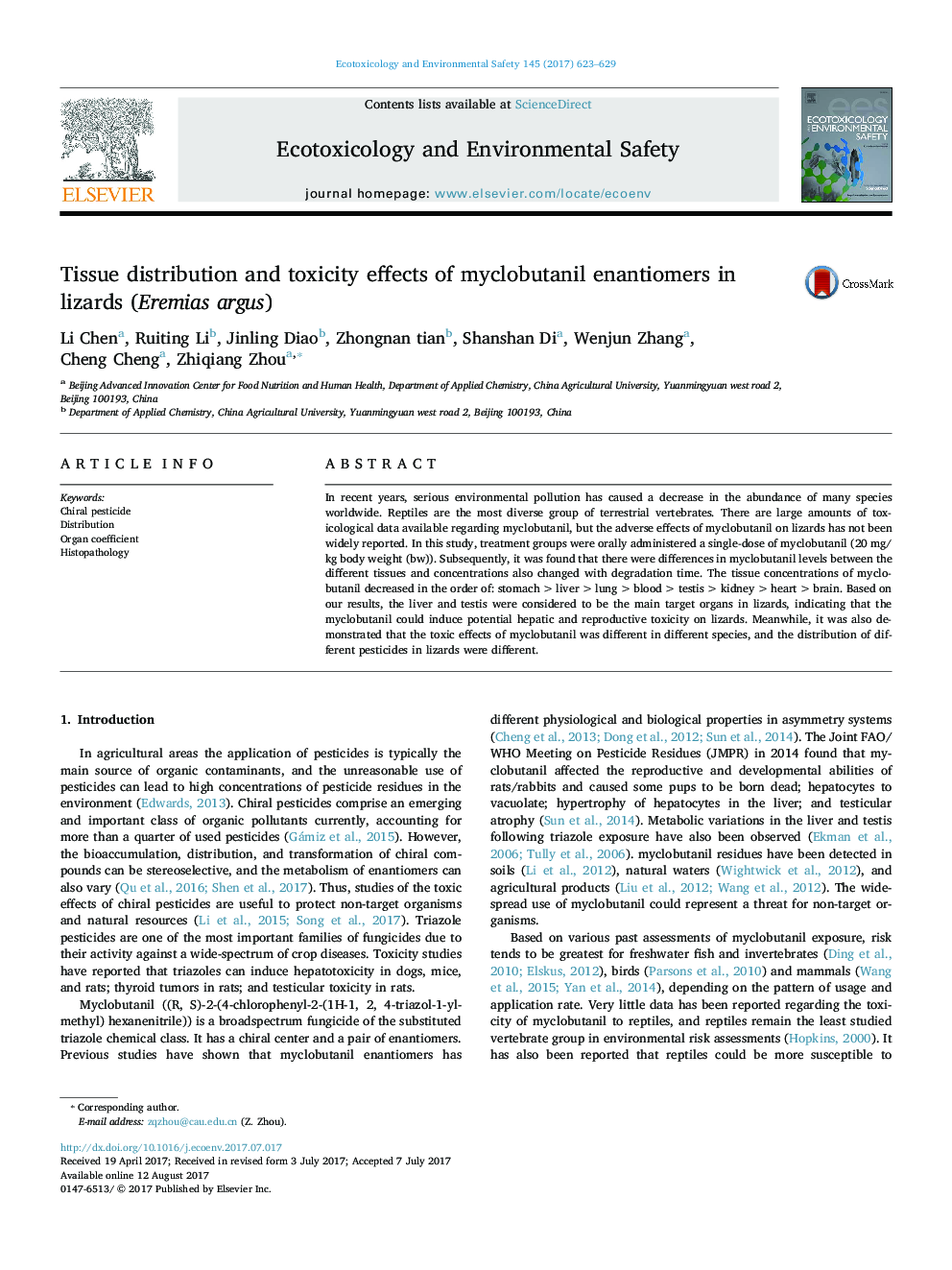| Article ID | Journal | Published Year | Pages | File Type |
|---|---|---|---|---|
| 5747741 | Ecotoxicology and Environmental Safety | 2017 | 7 Pages |
â¢The absorption, distribution and elimination of myclobutanil varied for tissues.â¢The liver and testis were confirmed as the main target organ in lizards after exposure.â¢The metabolic and excretion rate of (+)-myclobutanil was faster than that of (-)-myclobutanil in lizards.â¢At the same dosage, beta-cypermethrin were more toxic than myclobutanil in E. argus.â¢The distribution and excertion of myclobutanil was similar in lizards and rodents.
In recent years, serious environmental pollution has caused a decrease in the abundance of many species worldwide. Reptiles are the most diverse group of terrestrial vertebrates. There are large amounts of toxicological data available regarding myclobutanil, but the adverse effects of myclobutanil on lizards has not been widely reported. In this study, treatment groups were orally administered a single-dose of myclobutanil (20Â mg/kg body weight (bw)). Subsequently, it was found that there were differences in myclobutanil levels between the different tissues and concentrations also changed with degradation time. The tissue concentrations of myclobutanil decreased in the order of: stomach > liver > lung > blood > testis > kidney > heart > brain. Based on our results, the liver and testis were considered to be the main target organs in lizards, indicating that the myclobutanil could induce potential hepatic and reproductive toxicity on lizards. Meanwhile, it was also demonstrated that the toxic effects of myclobutanil was different in different species, and the distribution of different pesticides in lizards were different.
Graphical abstractDownload high-res image (176KB)Download full-size image
